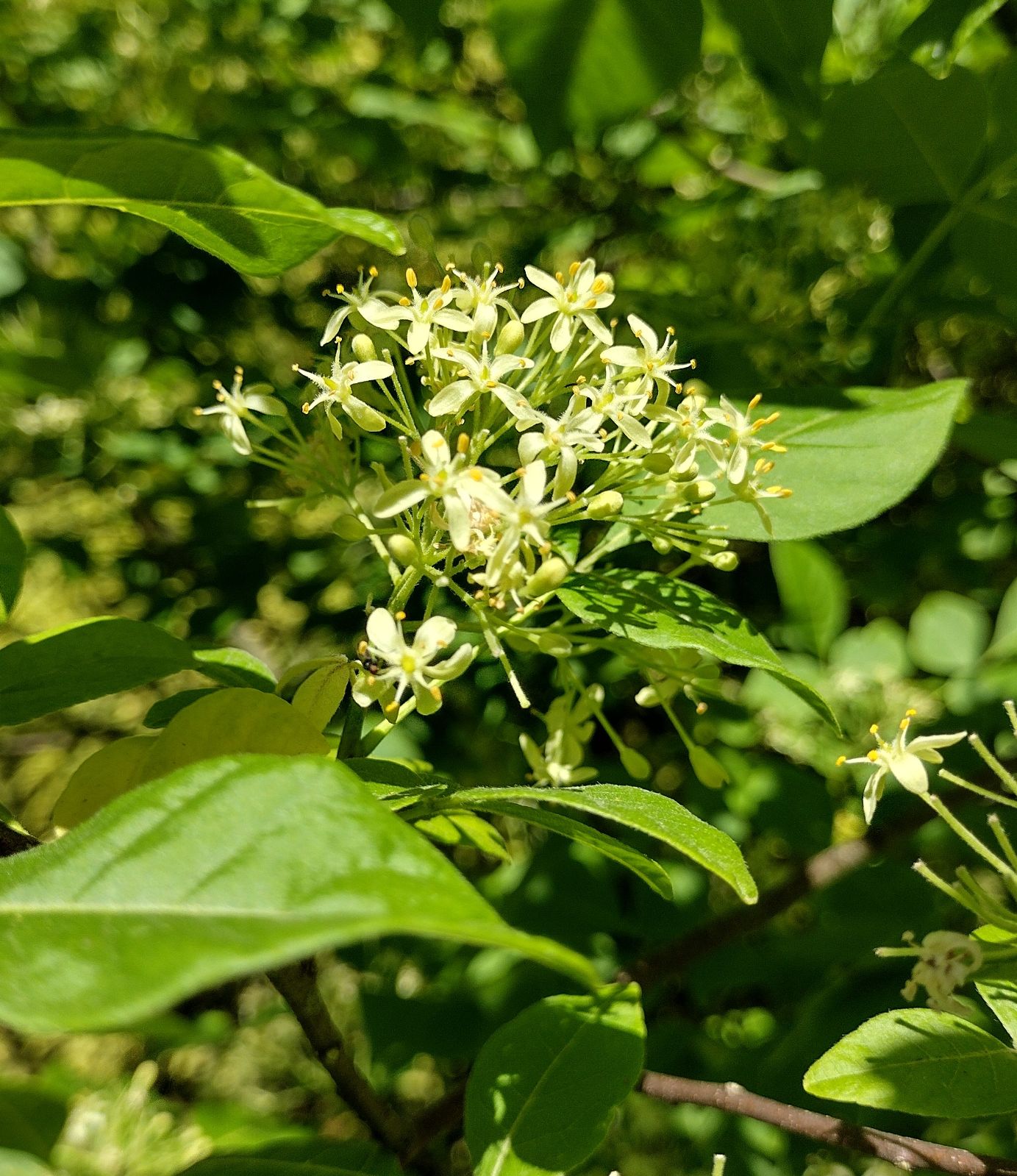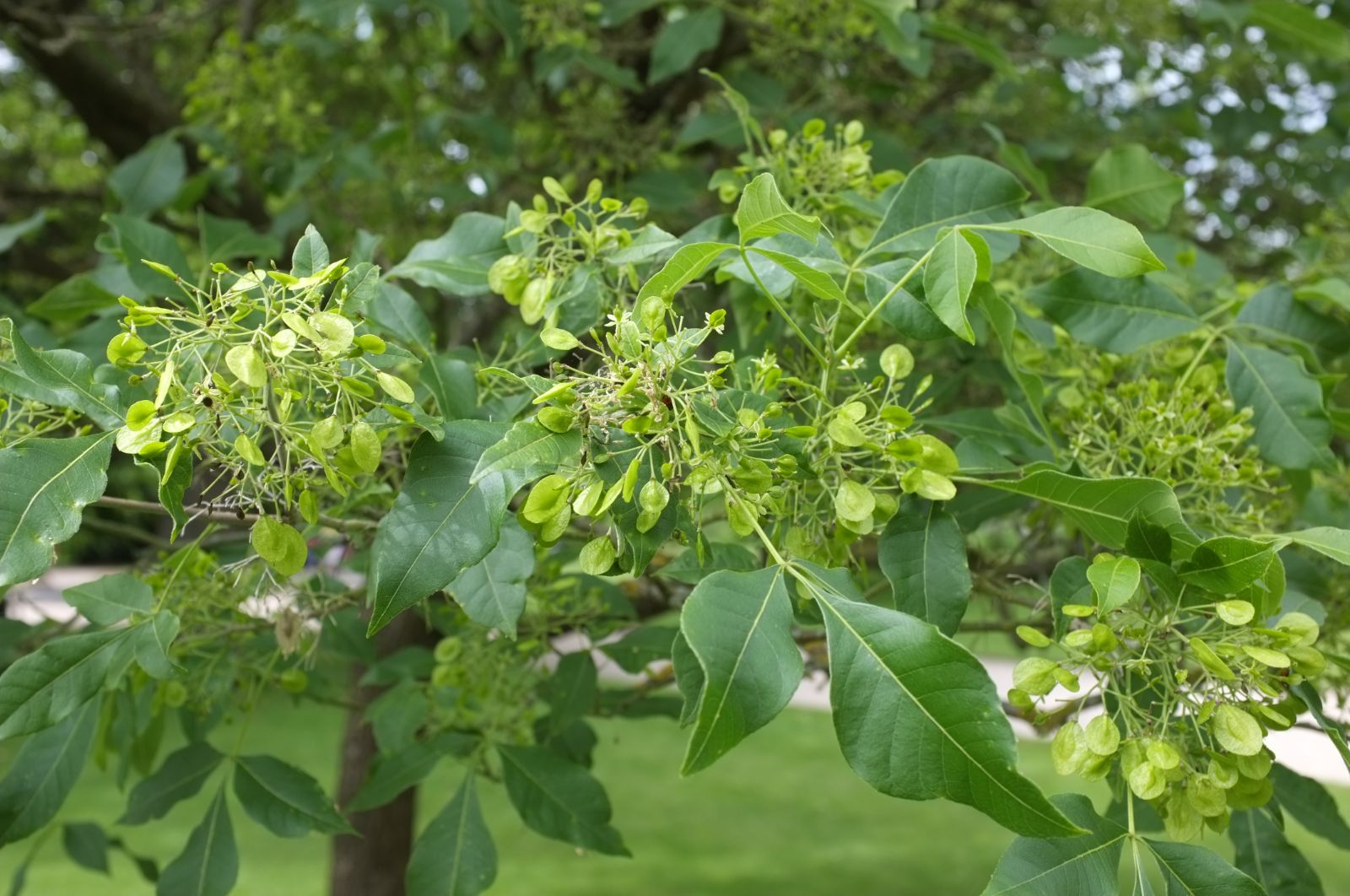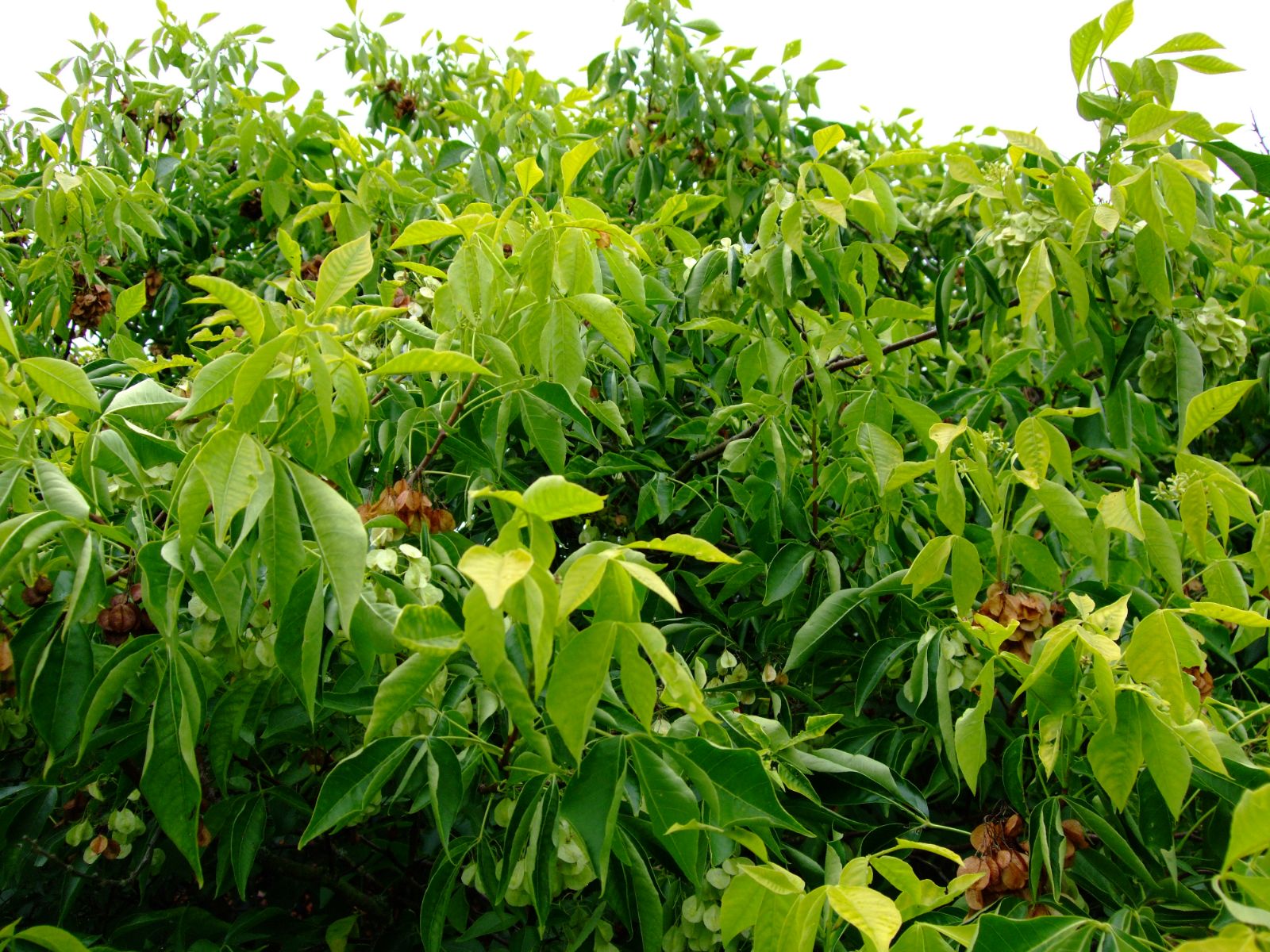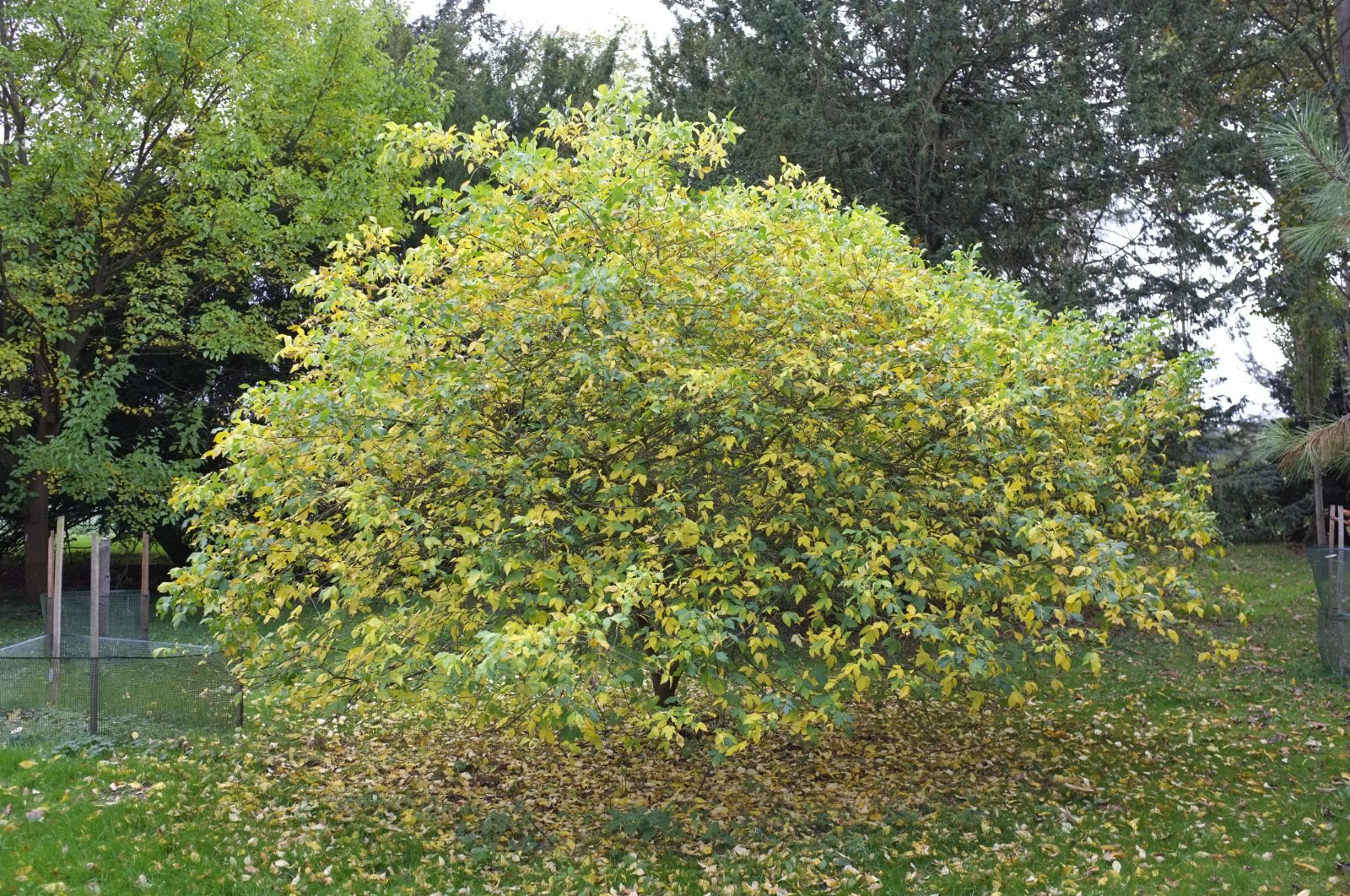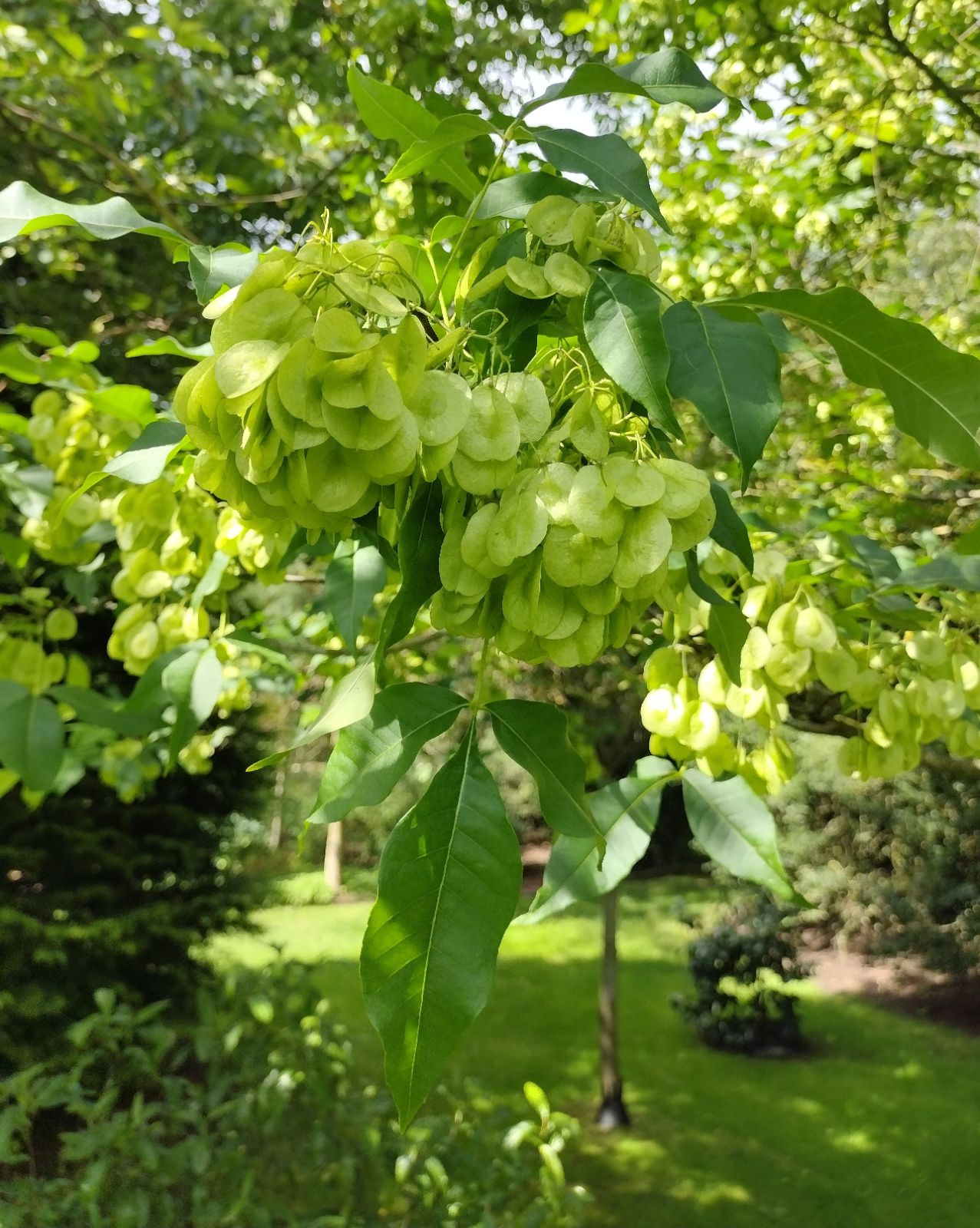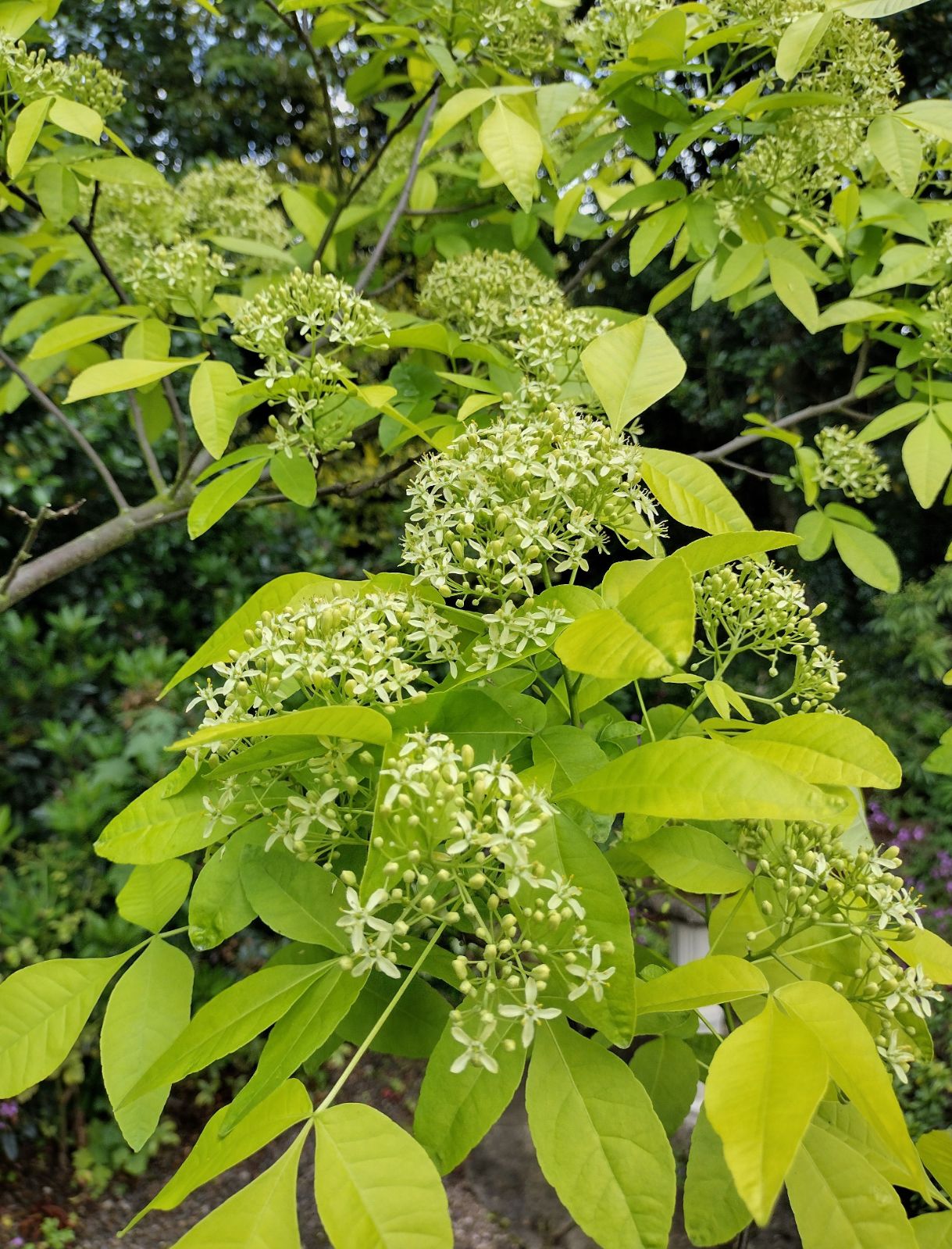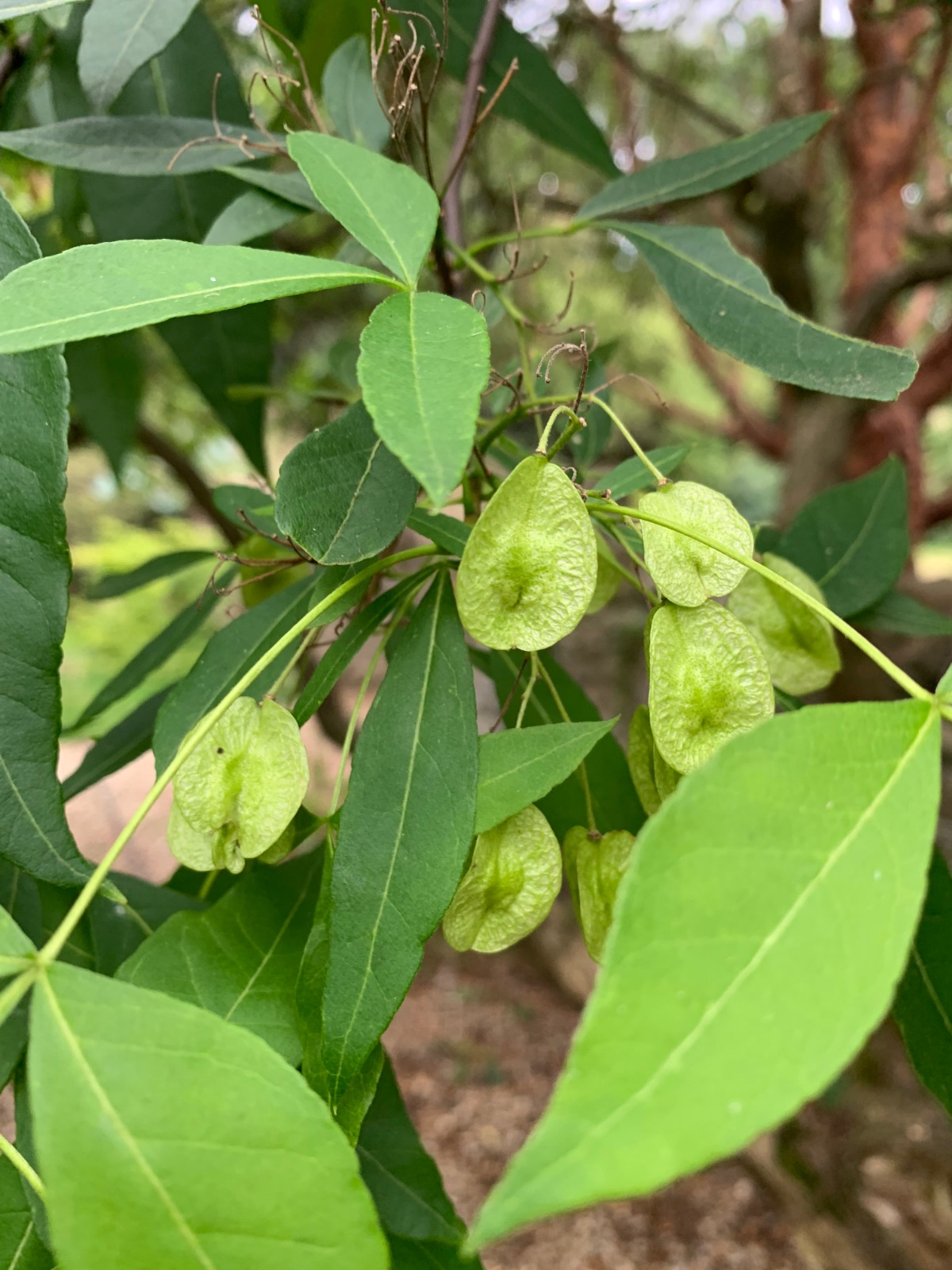Ptelea trifoliata
Credits
Article from Bean's Trees and Shrubs Hardy in the British Isles
Recommended citation
'Ptelea trifoliata' from the website Trees and Shrubs Online (treesandshrubsonline.
Genus
Common Names
- Hop Tree
Infraspecifics
Other taxa in genus
A low deciduous tree, usually under 25 ft high, often of greater breadth than height, with a short, comparatively thick trunk, often inclined. Leaves trifoliolate, the leaflets lanceolate, ovate or oblong, finely toothed or entire, downy beneath when young, the middle one the largest, and from 2 to 6 in. long, with a short stalk, the lateral leaflets unequal-sided, stalkless; the common leaf-stalk is 2 to 4 in. long. Held against the light and seen through a lens the blade is found to be dotted with oil-glands. Flowers borne on slender, downy stalks in corymbs 2 or 3 in. across during June and July, dull greenish white, 1⁄3 to 1⁄2 in. across. They are unisexual, the males soon falling away. Fruit in dense clusters, each a flat, thin disk from 2⁄3 to 1 in. across, consisting of an almost circular wing, with prominent netted veins surrounding one seed in the centre. Occasionally the fruit has more than one wing.
Native of S. Canada and the eastern United States; introduced to England in 1704. Ptelea trifoliata is one of the most distinct of hardy trees, and it is interesting for its large crops of curious elm-like fruits which often strew the ground in its neighbourhood throughout the winter, the fleshy part of the wing having decayed and left the netted veins. Very little of the seed is fertile in this country, but the tree is easily increased by cuttings. The bark, leaves, and young fruits emit a strong and aromatic scent when bruised, and the last have been suggested as a substitute for hops because of their intense bitterness. The tree is of picturesque habit, perfectly hardy, and appears to thrive in any well-drained soil. The leaves die off yellow in autumn.
'Aurea'
Leaves yellow at first, later lime-green. Uncommon but very handsome. Raised in Germany at the end of the 19th century.

